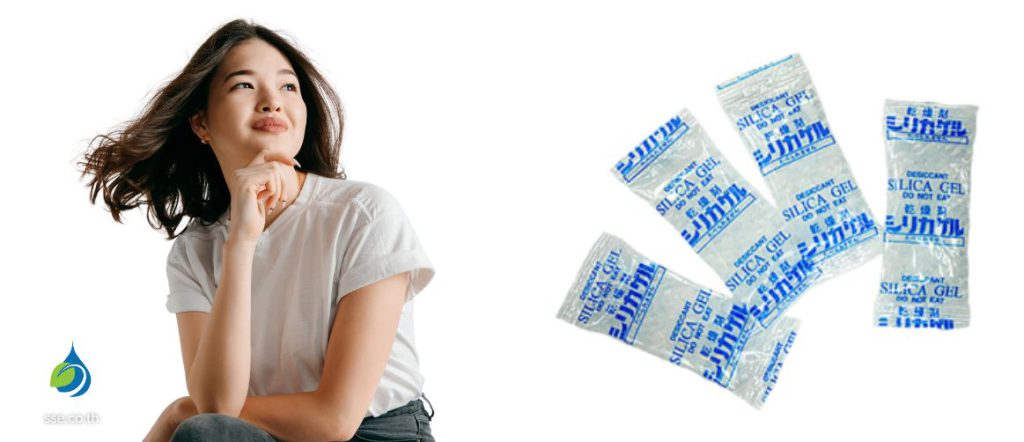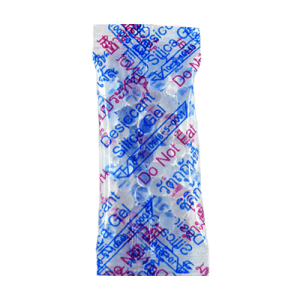Are Silica Gel Beads Biodegradable?


Are Silica Gel Beads Biodegradable?
Silica gel beads are commonly found in product packaging, but have you ever wondered, ‘Are silica gel beads biodegradable?’ This question is more important than you might think. As we strive to live more sustainably, understanding the environmental impact of everyday items like these is crucial.
“We do not inherit the earth from our ancestors, we borrow it from our children.”
Native American Proverb
What is Silica Gel?
Before we answer the question, let’s first understand what silica gel is and why it’s commonly used. Silica gel is a desiccant, which means it absorbs and holds water vapor. It’s used in product packaging to control humidity and prevent spoilage or damage to goods. You’ve probably seen small packets of silica gel beads in shoe boxes, handbags, or even snack packets. But what exactly are these beads made of?
Silica gel is a form of silicon dioxide, a naturally occurring mineral. It’s processed into either a beaded or granular form, and it’s porous, allowing it to absorb up to 40% of its weight in water. This makes it an incredibly effective desiccant.
Common Uses of Silica Gel Packets
| Product | Purpose of Silica Gel Packets |
|---|---|
| Food Packaging | Prevents spoilage by absorbing moisture |
| Electronics | Protects components from humidity damage |
| Clothing | Keeps items dry during storage and shipping |
| Medications | Maintains potency by controlling humidity |
Are Silica Gel Beads Biodegradable?
Now, let’s address the main question: Are silica gel beads biodegradable? The answer is a bit complex. While silica gel is derived from a natural mineral, it doesn’t break down quickly or easily in the environment. This is because silicon dioxide is a very stable substance, resistant to physical and chemical changes.
However, this doesn’t mean that silica gel is harmful to the environment. In fact, silicon dioxide is a common component of sand, and it’s non-toxic. So while silica gel beads might not biodegrade, they’re not going to contribute to pollution in the same way as plastic or other non-biodegradable materials.


The Biodegradability of Silica Gel Beads
To understand whether silica gel beads are biodegradable, we need to delve into their composition and how they interact with the environment. As mentioned, silica gel is made from silicon dioxide, a stable and non-toxic substance. This means that while it doesn’t biodegrade, it also doesn’t release harmful substances into the environment.
However, it’s important to note that the silica gel beads you find in product packaging often contain other substances. These can include dyes (which give the beads their distinctive blue or orange color) and cobalt chloride, which is used as a humidity indicator. These substances can be harmful to the environment and are not biodegradable.
The Environmental Impact of Silica Gel Beads
While the biodegradability of silica gel beads is a crucial aspect, it’s also important to consider their overall environmental impact. As we’ve seen, the silica gel itself is not harmful to the environment. However, the additional substances used in silica gel packets can be.
For example, cobalt chloride, a common humidity indicator, is classified as a substance of very high concern by the European Chemicals Agency. It’s harmful if swallowed or inhaled, and it can cause serious eye damage. It’s also hazardous to aquatic life.
However, many manufacturers are now switching to safer alternatives, such as environmentally friendly indicators and dyes. This means that while silica gel beads are not biodegradable, their environmental impact can be minimized.
Safe Handling and Disposal of Silica Gel Packets
Regardless of their biodegradability, it’s essential to handle and dispose of silica gel packets responsibly. Here are some tips for safely handling silica gel packets:
- Do not eat silica gel beads. While they’re non-toxic, they’re not meant for consumption.
- Keep silica gel packets out of reach of children and pets. They can be a choking hazard.
- If you have a large quantity of silica gel packets, consider donating them. Many organizations, such as libraries and museums, use silica gel to protect their collections.
Frequently Asked Questions
Are silica gel beads biodegradable?
Silica gel beads are not biodegradable. They are made from silicon dioxide, a non-biodegradable material.
Can silica gel beads break down naturally in the environment?
Silica gel beads do not break down easily in the environment, as they are chemically stable.
Are there eco-friendly alternatives to silica gel beads?
Yes, there are biodegradable desiccants made from materials like clay or starch-based products.
What happens if silica gel beads end up in a landfill?
Silica gel beads can remain in landfills for a long time without breaking down, but they are generally not harmful.
Is it safe to dispose of silica gel beads in regular trash?
Yes, it is safe to dispose of silica gel beads in regular trash, but consider reusing them to reduce waste.
Can silica gel beads be recycled?
No, silica gel beads are not recyclable, but they can be reused for moisture control.
Are silica gel beads harmful to the environment?
While not biodegradable, silica gel beads are generally non-toxic and do not pose a significant environmental threat.
How can I reduce the environmental impact of using silica gel beads?
You can reduce the impact by reusing silica gel beads or choosing biodegradable alternatives when available.
Can silica gel beads be used in compost?
No, silica gel beads should not be added to compost as they are not biodegradable.
What should I do with used silica gel beads?
Used silica gel beads can be safely disposed of in household waste, or better yet, reused to extend their life.
Conclusion
In conclusion, the question of whether silica gel beads are biodegradable is not a simple one. While the silica gel itself is not biodegradable, it’s also not harmful to the environment. However, the additional substances used in silica gel packets, such as dyes and humidity indicators, can be harmful and are not biodegradable.
Therefore, it’s essential to handle and dispose of silica gel packets responsibly. This includes not eating the beads, keeping them out of reach of children and pets, and considering donation if you have a large quantity.
Remember, every little action we take can contribute to a more sustainable future. So next time you find a silica gel packet in your product packaging, think twice before you throw it away. You might just be able to give it a second life!


Sources:
This post is part of our silica gel series.
Also check out our other page in this series: Are Silica Gel Packets Edible?
Call to Action
Now that you know more about the safety of silica gel packets, feel free to explore our other posts or check out our range of products for all your moisture control needs. We offer a variety of desiccants, including silica gel packets, to help protect your goods from moisture damage.
And remember, if you have any questions or concerns about silica gel or any of our other products, don’t hesitate to reach out to us. We’re here to help!
ขอบคุณที่ใช้เวลาอ่านบทความของเราเกี่ยวกับการป้องกันความชื้น ทางเราหวังว่าท่านจะได้รับข้อมูลที่มีคุณค่าและเป็นประโยชน์ ทางเรายินดีให้บริการการปรึกษาฟรีเพื่อพูดคุยเกี่ยวกับความต้องการของท่านและให้คำแนะนำเกี่ยวกับวิธีการป้องกันความชื้นที่กำหนดเฉพาะสำหรับคุณ โปรดติดต่อเราที่ 0858124188 เพื่อนัดหมายการปรึกษาหรือเยี่ยมชมร้านค้าของเราเพื่อค้นหาผลิตภัณฑ์ที่ช่วยป้องกันสินค้าของคุณจากความเสียหายจากความชื้น ทางเราหวังว่าจะได้รับข่าวสารจากท่านเร็วๆนี้


